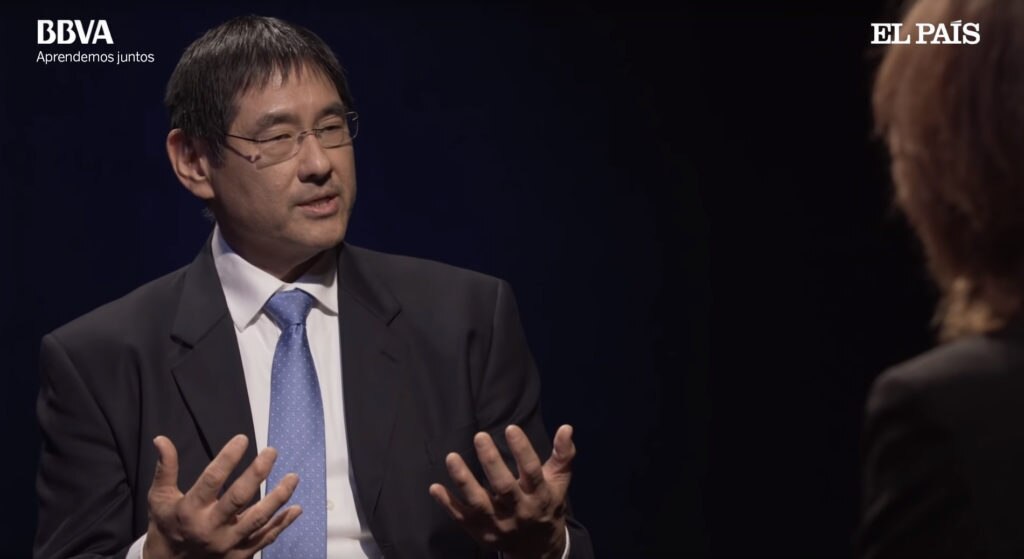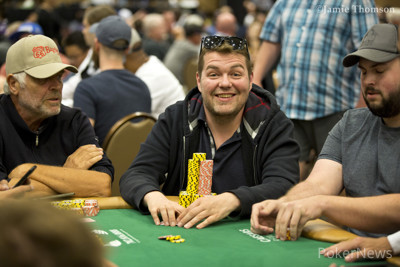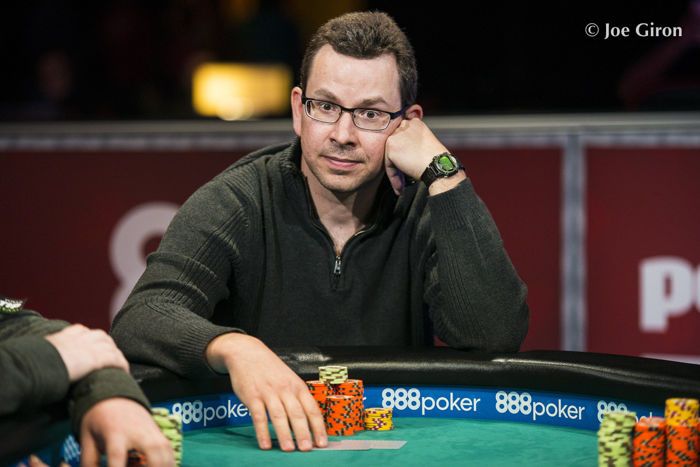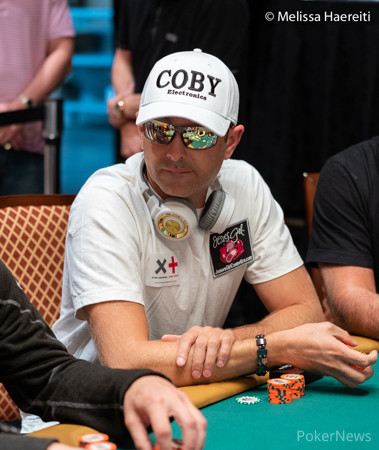David Matsumoto is the director of Humintell, professor of psychology at San Francisco State University. You know, you play poker and that there are tells that people have. David Matsumoto's Results, Stats. Date Country Place Prize GPI Points POY Points; 29-Feb-2020: United States: $ 9,500 + 500 No Limit Hold'em - WPT L.A. Poker Classic (LAPC) Main Event World Poker Tour - WPT L.A. Poker Classic (LAPC), Los Angeles. David Matsumoto poker results, stats, photos, videos, news, magazine columns, blogs, Twitter, and more. WPT Career Highlights Value Rank; Career Earnings: $33,230: 4,144: Cashes: 1: 14,312: Final Tables: 0: 14,276: Titles: 0: 13,735.
- David Matsumoto Poker Club
- David Matsumoto Poker Games
- David Matsumoto Poker Tour
- David Matsumoto Poker Player
- David Matsumoto Polo
Episode 34

If you think reading people is not a science, think again. Understanding expressions that only appear on someone’s face for tenths of a second can mean a lot to those who know what to look for. In this episode, psychologist and nonverbal communication expert David Matsumoto, PhD, talks about why nonverbal communication is so important in everything from police investigations to intercultural exchanges.
About the expert: David Matsumoto, PhD
David Matsumoto, PhD, is a renowned expert in the field of facial expression, gesture, nonverbal behavior, emotion and culture. He has published more than 400 articles, manuscripts, book chapters and books on these subjects. Since 1989, Matsumoto has been a professor of psychology at San Francisco State University. He is also the founder and director of SFSU’s Culture and Emotion Research Laboratory, as well as the founder of Humintell.
Matsumoto is also the head instructor of the East Bay Judo Institute in El Cerrito, California. He holds a 7th degree black belt and has won countless awards, including the U.S. Olympic Committee’s Coach of the Year Award in 2003. Matsumoto served as the head coach of the 1996 Atlanta Olympic Judo Team and was the team leader for the 2000 Sydney Olympic Judo Team.
Transcript
Audrey Hamilton: A fleeting change in someone’s face or body language can signal a lot of different emotions. Why do people’s faces change when they’re angry or sad? In this episode, we speak with a psychologist and expert in facial expression, gestures and other nonverbal behavior about how not speaking can speak volumes. I’m Audrey Hamilton and this is “Speaking of Psychology.”

David Matsumoto is a professor of psychology and director of the Culture and Emotion Research Laboratory at San Francisco State University. An expert on facial expressions, nonverbal behavior and deception, he is director of Humintell, a company that conducts research and training for organizations such as the Transportation Security Administration, the FBI and the U.S. Marshalls Service. Welcome, Dr. Matsumoto.
David Matsumoto: Thank you for having me.
Audrey Hamilton: We’re probably all familiar with the universal facial expressions of our emotions – you know, anger, joy, sadness – you know, those are some of them. Can you give examples of some of the less obvious facial expressions? I think you call them microexpressions, you know where someone is maybe attempting to conceal his or her emotions. These are much harder to detect. Is that right?
David Matsumoto: Microexpressions are unconscious, extremely quick, sometimes full-face expressions of an emotion. And sometimes they’re partial and very subtle expressions of emotion. But because they’re extremely quick and because they’re unconscious, when they occur, they occur often times less than half a second – sometimes as fast as one-tenth of a second or even one-fifteenth of a second. Most people don’t even see them. Some people do see them but they don’t know what they’re seeing. They see something that has changed on the face, but they don’t know exactly what is was that was changed.
Audrey Hamilton: It’s fleeting?
David Matsumoto: It’s very fleeting, but if you take a freeze frame on it on a video, you’ll see that a lot of times there’s a big facial expression that is very clear about what the person’s mental state is.
Audrey Hamilton: It all sounds very interesting, but how is this useful in the real world? You work with numerous organizations like I mentioned – the FBI, the TSA – to help train interrogators and business people in the skill of reading people. Tell us about your applied work in training programs.
David Matsumoto: Well, learning to read microexpressions and nonverbal behaviors in general can be very valuable for anyone whose job it is to understand other people’s true feelings, their thoughts, their motivations, their personalities or their intentions. So obviously, there’s an application for people who are doing interviews or interrogations. That would be people in the criminal justice system, law enforcement, national security, intelligence – those are the kinds of people that we primarily work with because their job is to try to find about whether a person is concealing facts or concealing knowledge or concealing something or has some information that would be useful for solving a crime or getting some other kinds of information. And so, when one wants to be able to do that it’s very useful to be able to read these microexpressions.
But again, the application is very clear for anybody whose job it is to be able to get that kind of additional insight – what I call data superiority – for the individual who’s observing others. So it could be for sales people. It could be for the legal profession. It could be for healthcare professionals or psychotherapists. Medical doctors. Sales person, I think I mentioned sales person. Anybody whose job it is to gain some additional insight about the person that you’re talking with so that you can leverage that information for a particular outcome.
Audrey Hamilton: I imagine these skills are particularly important in intercultural exchanges. Are facial expressions and gestures different in other cultures and can you give us some examples?
David Matsumoto: Well, facial expressions of emotion are universal in the sense that everybody around the world regardless of race, culture, nationality, sex, gender, etc., whatever the demographic variable is, we all show the same facial muscle expressions on our faces when we have the same emotions.
Now, of course, the question is context will moderate all of that and what kinds of things bring about different emotions in different cultures. So, of course, there are cultural differences and large individual differences in when people express emotions and how they express them when they feel the emotions. But if there’s no reason to change anything when people are feeling extremely strong emotions and they can express it freely, they will express those emotions on their faces in exactly the same ways.
Gestures are very different. There are many different types of gestures and so the two types of gestures that we generally work with are called speech illustrators and emblems. Speech illustrators are these gestures that accompany speech that when you see a person using their hands when they’re talking to illustrate a point; they’re like animation. They’re like how we use our voice. They’re functionally universal in the sense that everybody around the world uses hand gestures as speech illustrators. But people around the world differ in the amount that they do them and in the form. So if you can picture people waving around. Some people in some cultures wave around their hands in a certain way. Some people point when they talk. Some people are doing various different types of things with their hands when they talk. So the form in which the illustrator occurs is different, but the function is the same across different cultures.
David Matsumoto Poker Club
Emblems is another type of gesture. These are generally culturally specific. These are gestures that refer to specific words or phrases. So, if you can imagine, the listeners can imagine the thumbs up, which has a meaning around the world, which is like “OK” or “good.” These things are culture specific, so every culture, just as every culture has a verbal vocabulary – different verbal vocabulary – every culture creates a vocabulary of emblematic gestures that correspond to certain types of phrases that they think are important to have in a gesture.
David Matsumoto Poker Games
So those are very culture specific. Now what’s really interesting about that is that some of our most recent research published a couple of years ago has shown that some gestures are beginning to be universally recognized around the world, like head nods for yes and head shakes for no. Of course, there’s places around the world that still do them in different ways. But they are increasingly being recognized universally around the world, probably because of a lot of shared mass media and because of the Internet or movies and things like that. So, in summary, with nonverbal behaviors, there’s some aspects of it that are very universal and some aspects of it that are culturally specific.
Audrey Hamilton: Some of your research has involved the study of blind athletes. I thought this was interesting. Can you tell us how that research has furthered your understanding of human emotions?
David Matsumoto: Yeah, well to tell you the truth, one of the pervasive questions about facial expressions of emotion in the past has been whether they’re universal or not and I think there’s very conclusive evidence about the universality of facial expressions of emotion.
Then, the next question becomes where do they come from? Because it could be that we are all born with some kind of innate skill that is an evolutionarily based kind of adaptation that we share with non-human primates and other animals. Or it could be that humans have just all around the world learned, regardless of where they are, from the time that they’re infants. So it could be something that is learned or something that is biologically innate.
David Matsumoto Poker Tour
Now studying blind individuals, and especially congenitally blind individuals, is a particularly great thing to do to address this particular research question because when you study blind individuals and you study their expressions you know that as long as they were congenitally blind that there was no way that they could possibly learn to see those expressions and put them on their faces from birth because they’ve been blind from birth. And so when you study a population like that it helps you address a certain research question. And so in the studies that we’ve done, we’ve actually studied the spontaneous facial expressions of blind individuals from around the world from many different cultures and we show that in the same emotionally evocative situations that blind individuals produce on their faces exactly the same facial muscle configurations where the same emotions as sighted individuals do. And again, because these are individuals who are blind from birth, there’s no way that they could have possibly learned to do that by seeing others do it.
And so it leads me to think and many others to believe that the ability to have facial expressions of emotion is something that is biologically innate and that we are all born with.
I’ve done judo for 48 years of my life here and I’ve been fortunate enough to be part of our Olympic movement in judo. I was the Olympic coach for the 1996 and 2000 Olympic Games for the United States. We studied the expressions of the athletes in the sighted – in the regular Olympic Games – for these are all sighted individuals and we study their expressions right at the moment they won or lost their medal match. And we’re taking photographs. These are high-speed photographs – eight shots per second with a very expensive camera – and so we can track the expressions – you know in minute second by second or fractions of a second resolution – right at the time of winning or losing the match. And we also could see the expression of the same athletes on the podium 30 minutes later in a social context. So we could do that comparison.
Two weeks after the Olympic Games, every Olympics, what happens in every Olympics is the Paralympics rolls into town using exactly the same venue. So my guy was there still and every sport has a different disability. For judo, it’s blindness. So all of the judo athletes in the judo Paralympic Games are all blind. Half of them or some degree of them are congenitally blind and some are acquired blindness through some kind of disease or accident (there are no differences between them, by the way). But anyway, we were able to do the same kind of study with the Paralympic judo blind athletes in the Paralympic Games.
When you compare the expressions of the blind athletes in the Paralympic Games to the sighted athletes in the regular Olympic Games, what you find is that for the winners – winners and losers – they all do the same thing. We measure the exact facial muscle movements that are occurring right at the time of winning or losing that match. So I think the correspondence – the correlation between the facial muscle movements is something like 0.9 or some incredibly high number that you never see in research nowadays – so that correspondence is amazingly high between the blind and the sighted athletes.
What’s really interesting about blind athletes is this – or sighted – if we asked our listeners to show on their faces what do you do, what do you show, what do you think you do on your face when you express anger? Everybody can give you something and it will be pretty much accurate. And the reason is because all of us have seen it. We’ve seen it in ourselves if we’ve seen ourselves angry in the mirror. Or we see it in others when they’re angry. So we see it. We know what it looks like. We’ve seen ourselves do it. We know what it feels like. A blind athlete has never seen it. So if you ask a blind person, “Hey, show me what you look like when you’re angry or when you’re sad,” you’ll get something that’s close but you don’t get the exact facial muscle movements that occur when those emotions occur spontaneously. However, when it occurs spontaneously, the exact facial muscle movements are exactly the same. So blind individuals produce them spontaneously but don’t produce exactly the same thing when you ask them to pose whereas sighted people do.
Audrey Hamilton: Interesting.
David Matsumoto Poker Player
David Matsumoto: And so this to me is another example of how there’s differences between the blind and the sighted and why they are because this is a biologically innate thing. They can do it when it’s spontaneous.
Audrey Hamilton: Well, thank you Dr. Matsumoto for joining us today. It’s been very interesting.
David Matsumoto: My pleasure.
Audrey Hamilton: For more information on Dr. Matsumoto’s work and to hear more episodes, please go to our website. With the American Psychological Association’s “Speaking of Psychology,” I’m Audrey Hamilton.
Happy or not, Russians rarely smile in public.

By Marina Krakovsky published January 1, 2009 - last reviewed on May 15, 2017
American visitors to Russia often can't get over the sullen looks on the natives' faces, worn by service workers and passersby alike. But what may appear to be a nationwide case of the blues has a more benign origin.
While it's true Russians are generally less happy than Americans, the difference isn't huge, explains PT blogger Sonja Lyubomirsky, a psychologist at the University of California-Riverside and the author of The How of Happiness. 'It could explain part of the effect, but it's not the whole story,' she says. In fact, in private, it's Americans who look more subdued, says Lyubomirsky, who grew up in Moscow. 'You go to a dinner at a Russian home, and the Russians seem happier—they're drinking, singing, telling stories.'
This public-private divide hints at a set of cultural rules about when to show your feelings. David Matsumoto, a psychologist at San Francisco State University who led a large study of emotional display rules around the world, found that Russians control their expressions of emotion much more than Americans do. This is true of collectivist societies in general: Where people are more interdependent and group-oriented, they tend to either neutralize their emotional responses or mask one expression with another—especially with strangers or in public.
Tamping down emotional displays reinforces the borders between friends and strangers, which in collectivist societies are hard to cross. In individualist, mobile societies like the United States, in contrast, relationships come and go more easily, leading to more openness with everyone.
Oblivious to these rules, both sides are bound to misread each other's faces. Just as Americans mistake Russian reserve for surliness, Russians find friendly American smiles phony.
No one is sure how Russians came to prefer neutral expressions to masking their emotions with smiles the way the intensely collectivist Japanese do. It may be that Russians, spread out on their vast land, had less need for pleasantries. Or Russia's shortage of resources for coping with a harsh climate put its people in survival mode. Pile on a brutal history—especially in the Soviet era—and it's not surprising Russians are cautious around strangers.

Whatever the reason, it takes longer to befriend a Russian. But as Matsumoto puts it, 'Once you're drinking vodka shots together, they're more expressive than anyone else.' —Marina Krakovsky
David Matsumoto Polo
Buried Feelings

Moscow subway posters have been urging the public to smile: 'It's an inexpensive way to improve your looks,' says the headline above an uncharacteristically cheerful Metro worker. But it'll take more than an ad campaign aimed at increasing well-being to change Russia's deep-seated attitudes. Linguist Iosif A. Sternin of Russia's Voronezh State University provides a sampling of the unwritten rules of smiling:
- A Russian smiles only for good reason—and only if the reason is apparent to those around him.
- It's not customary to smile while helping customers or conducting serious business.
- It's not customary to smile to lift another's spirits.